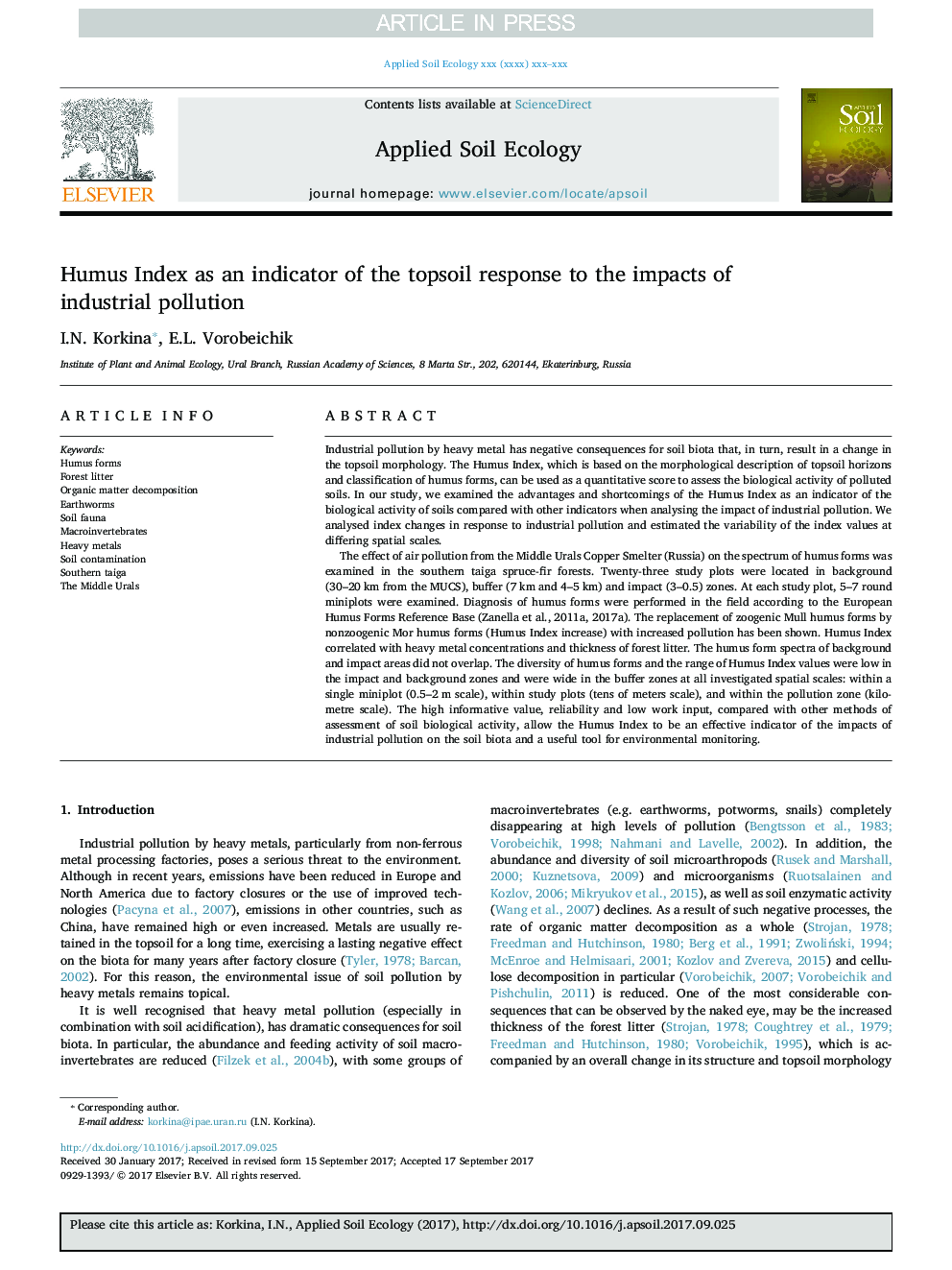| Article ID | Journal | Published Year | Pages | File Type |
|---|---|---|---|---|
| 8846848 | Applied Soil Ecology | 2018 | 9 Pages |
Abstract
The effect of air pollution from the Middle Urals Copper Smelter (Russia) on the spectrum of humus forms was examined in the southern taiga spruce-fir forests. Twenty-three study plots were located in background (30-20Â km from the MUCS), buffer (7Â km and 4-5Â km) and impact (3-0.5) zones. At each study plot, 5-7 round miniplots were examined. Diagnosis of humus forms were performed in the field according to the European Humus Forms Reference Base (Zanella et al., 2011a, 2017a). The replacement of zoogenic Mull humus forms by nonzoogenic Mor humus forms (Humus Index increase) with increased pollution has been shown. Humus Index correlated with heavy metal concentrations and thickness of forest litter. The humus form spectra of background and impact areas did not overlap. The diversity of humus forms and the range of Humus Index values were low in the impact and background zones and were wide in the buffer zones at all investigated spatial scales: within a single miniplot (0.5-2Â m scale), within study plots (tens of meters scale), and within the pollution zone (kilometre scale). The high informative value, reliability and low work input, compared with other methods of assessment of soil biological activity, allow the Humus Index to be an effective indicator of the impacts of industrial pollution on the soil biota and a useful tool for environmental monitoring.
Keywords
Related Topics
Life Sciences
Agricultural and Biological Sciences
Ecology, Evolution, Behavior and Systematics
Authors
I.N. Korkina, E.L. Vorobeichik,
